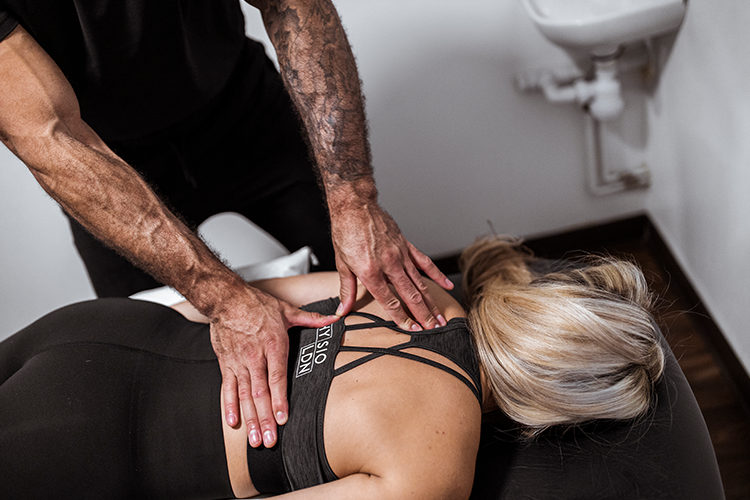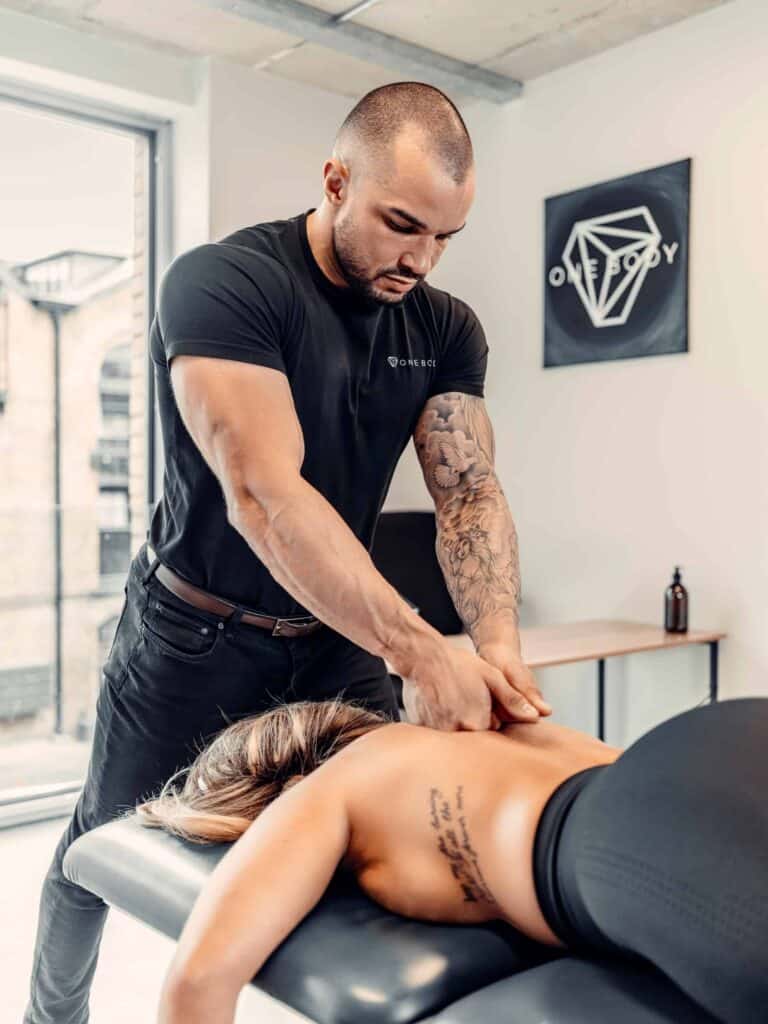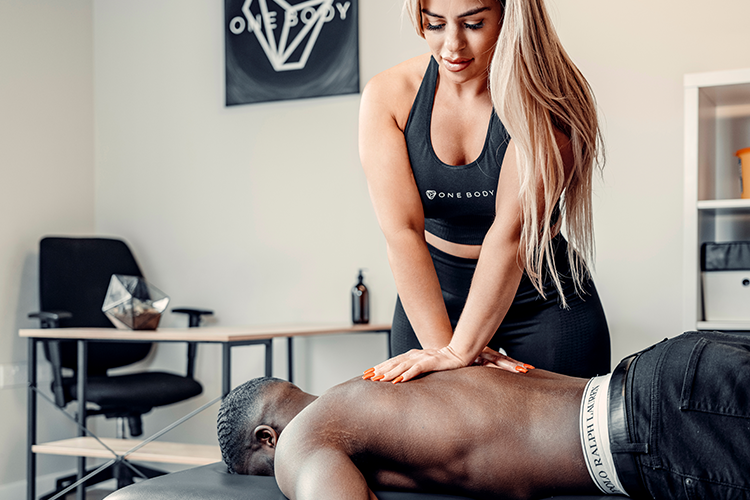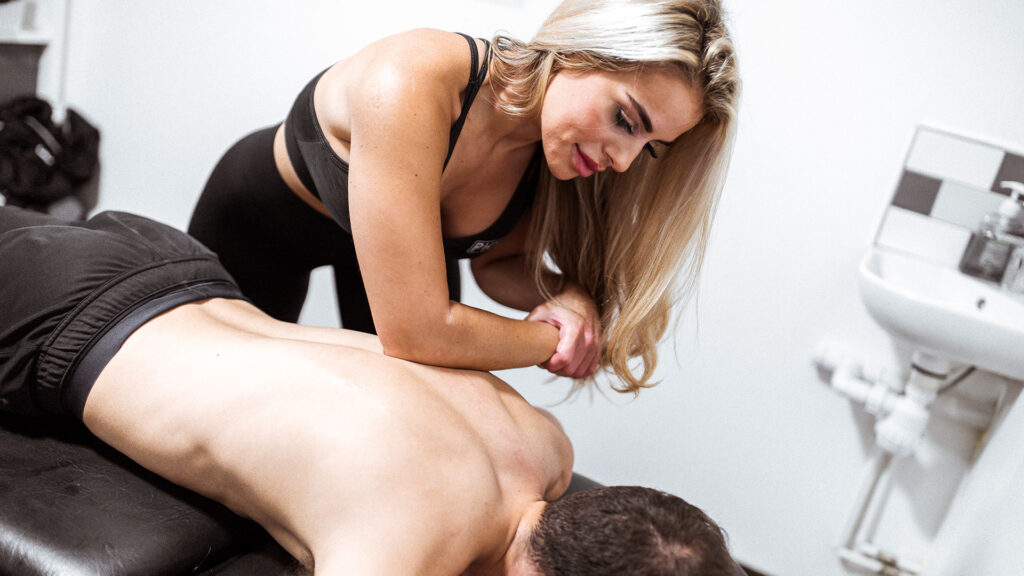Table of Contents
Main Takeaways
- Targets deep muscle layers: Deep tissue massage applies firm pressure to reach deep muscles, tendons, and fascia, helping release tension, knots, and scar tissue.
- Promotes healing and recovery: By improving blood flow and reducing inflammation, it accelerates recovery from injuries and supports rehabilitation after illness or physical strain.
- Delivers lasting pain relief: Regular sessions can ease chronic pain, reduce muscle soreness (including DOMS), and help manage conditions like stiff neck or tight shoulders.
- Supports overall relaxation: Despite its intensity, deep tissue massage can lower stress, improve sleep, and increase flexibility, offering both physical and mental rejuvenation.
- Must be done professionally: To avoid injury, deep tissue massage should only be performed by trained experts using tailored techniques like myofascial release and trigger point therapy.
Deep tissue massage in London is a highly effective way to unwind, release tension, and rehabilitate your body. But how exactly does it work? That’s what this guide is here to explain.
At One Body LDN, we specialise in deep tissue massage, sports massage, and physiotherapy for all Londoners – individuals, NHS referrals, and corporate clients too. So, we know how to provide a professional and effective deep tissue massage session.
This guide covers what a deep tissue massage is, what to expect from your first session, and the health benefits linked to the practice.
Deep Tissue Massage

Deep tissue massage is simply a physical manipulation technique that applies firm pressure to the body. This massage reaches the deepest layers of muscles, tendons, and connective tissues to relax and rehabilitate the body. It is quite rejuvenating for the mind too!
You’ll find that deep tissue massage is relaxing in a restorative way. It is often used to break down scar tissue or other hard tissues, stimulate the muscles, and target knots or areas of tension.
It is super popular with athletes, and many deep-tissue massage techniques are actually used for professional sports massage, too. This is because deep tissue massage is highly effective for healing injuries and relieving you of the intense stress and tension that come with competitive sports (or just a stressful nine-to-five).
In London, you’ll find many of the UK’s best deep tissue massage clinics where you can book a single session to work out the knots. You can also book bundles of sessions and find a deep tissue massage expert that you get on with for long-term treatments. Regular deep tissue massage sessions can help to relieve chronic pain and transform your quality of life.
Note: you might be tempted to give or receive a deep tissue massage from your partner. However, we don’t recommend it! Unlike a general soft tissue massage, deep tissue massage applies intense pressure to the body and can be damaging if not carried out by an expert.
At One Body, all our therapists are highly trained and qualified, with years of experience using specialist techniques.
What to Expect from a Deep Tissue Massage

First, we strongly recommend that you opt for an assessment before booking your first deep tissue massage in London. At One Body, we have an assessment that takes 50 minutes to explore your current physical condition, the treatments that will be most effective, and a treatment plan for the future.
Once you have been assessed and are ready to go, here’s what happens:
- You book a session (25-minutes, 50-minutes, or 80-minutes) with the therapist of your choice at a time that works best for you in one of our London clinic locations.
- Wear loose-fitting, comfortable clothes that are easy to get on and off. Make sure you’re wearing suitable underwear, too, as we need access to your body to perform a good deep-tissue massage!
- Relax, and let us guide you through the process. Depending on your assessment and needs, we’ll provide the massage on a specific area or your full body. You can talk to your therapist at any time – good communication is key. Let us know if it’s too painful.
- After your session is up, you may feel a little sore or uncomfortable. This is totally normal. All you need to do is head home, relax, rehydrate, refuel, and take a nice bath if you feel like it. Any discomfort will fade in a day or two.
The release of tension and stress should be immediate, while other benefits, such as improved mobility and stronger muscles, may be more of a gradual procession over numerous sessions.
What About Swedish or Sports Massage?
Deep tissue massage is often compared with sports massages and Swedish-style massages, not to mention physiotherapy techniques. All of these practices are similar but with key differences:
- Swedish-style: a gentler tissue massage that may be more appropriate for treating injured areas. This therapy stimulates the body without pressing into the deepest layers of tissues. Its benefits include relieving stress, anxiety and depression, as well as physically healing the body.
- Sports massage: using deep tissue massage techniques (among others), this practice uses physical manipulation to repair, relax, and improve the body for physical movement – whether that’s day-to-day activities or a professional athletic lifestyle.
- Physiotherapy: requiring more education (to a degree level) to practise, physiotherapy is focused on returning the body to normal functioning. It can use massage techniques, among a plethora of other tools, to restore mobility, flexibility, strength and coordination after an injury or illness.
If it’s unclear which treatment you need, reach out to us at One Body and start your assessment. Our team of therapists are trained and specialised in these practices and more.
How It Works

Deep tissue massage works through relaxing, softening, and stimulating. Applying firm pressure can break down tough tissues (like scar tissue, for example) or tight and stiff muscles.
This intense pressure may be uncomfortable in the moment, but by breaking down these tissues, we are encouraging the body to heal. Once the discomfort fades, you should find that any pain or tension has subsided.
Another way deep tissue massage works is by stimulating the muscles and encouraging blood flow. Rubbing and stroking the muscles releases strain, which improves mobility and restores your full range of motion.
Stimulating the muscles by increasing blood flow can also promote muscle growth and development, which is why deep tissue massage is popular with gym-goers, athletes and really anyone who leads an active lifestyle.
The Techniques We Use
Specific techniques that you may encounter during deep tissue massage in London include:
- Pressure and friction – these neuromuscular techniques release strains and tension.
- Myofascial release – treats the tissue surrounding and supporting your muscles.
- Stretching and twisting – soft tissue therapy and manipulation to boost blood flow.
- Trigger point therapy – targeting knots and areas of tight muscles.
These techniques may be applied to the whole body (a full body deep tissue massage) or just parts of the body. The shoulders, back, neck and legs are usually focused on, but we can target any area of the body that feels stressed and tense.
For a full body deep tissue massage in London, we recommend booking a 50-minute or 80-minute session to ensure every body part can be thoroughly and effectively treated.
Deep Tissue Massage Benefits

Deep tissue massage is an alternative medicine practice, but it shares many techniques with sports massage and physiotherapy. It shares some of their benefits too.
Relieve Pain
Deep tissue massage can help to relieve pain, even though it may be uncomfortable or slightly painful on the massage table. By softening tissues and promoting blood flow, massage can reduce inflammation and lactic acid build-up.
This may help to ease Delayed Onset Muscle Soreness (DOMS) and other aches and pains you are experiencing. One randomised controlled trial exploring deep tissue massage therapy and neck pain found that massage treatments notably improved perceived pain intensity levels.
Promote Healing
More than just relieving pain, deep tissue massage can promote the healing process. This makes deep tissue massage therapy indispensable for recovering from a sports injury or rehabilitation after an illness. Increasing blood flow also increases oxygen delivery, helping your muscles to recover. It can reduce swelling and inflammation by releasing toxins held within your tissues.
Deep tissue massage therapy can be highly effective as part of the recovery process. Just make sure your therapist knows about your injuries and health conditions.
Enhance Relaxation
Finally, relaxation. Deep tissue massage can lower your blood pressure, improve flexibility, and reduce pain to help you sleep. Massage is also a chance to take a break from your daily routine, head to a professional clinic, and spend some time working on yourself.
At the end of your deep tissue massage session, you should feel relaxed, loose, and more flexible. Once you get home, taking a bath and relaxing fully will help you recover further and enjoy the benefits of deep tissue massage.
Don’t forget to rehydrate and eat well, too, as this will help your body shake the soreness from your massage and give your body a rest.
Finding the Best Deep Tissue Massage in London!
Deep tissue massage should always be conducted by a professional, and if you’re looking for the best deep tissue massage in London, start with One Body. Our team of professional physiotherapists, massage therapists and specialists are based in multiple clinic locations across the capital.
We have over 5x the required training needed to perform deep tissue massage and physiotherapy, so we can help fix your body for good.
Are you ready to experience our deep tissue massage services and book a session? You won’t regret it. Did you know that we offer discounts for booking session bundles too?
Deep Tissue Massage in London FAQs
What is a deep tissue massage?
Deep tissue massage therapy is an alternative medicine that uses intense, deep manual manipulation techniques to treat the body. This massage is firmer than a spa massage and is designed to relieve pain and soothe any aches across the musculoskeletal system.
What should you do after a deep tissue massage?
After a deep tissue massage, make sure to rehydrate and eat healthy food to help your body recover. You might feel a little sore or uncomfortable for a few days. Taking a bath and relaxing at home will help the feeling pass. Once the discomfort is gone, you should feel more relaxed and rejuvenated.
How often should you get a deep-tissue massage?
How often you should get deep tissue massage therapy depends on the purpose for the treatment. If you suffer from chronic pain, regular (or even daily) sessions can help to ease your ailment.
For an injury, a single session after the injury may suffice. Regular deep tissue massages (e.g. weekly) might also be useful during intense training for athletes and amateur athletes.
How does deep tissue massage work?
Deep tissue massage works by using intense pressure – it rubs, twists and applies pressure to the deep layers of muscles and tissues. This promotes blood flow and softens the tissues, which will reduce tension and pain, improve flexibility, and can even be used to break down hard scar tissue.For more information see the blog What to Expect During a Deep Tissue Massage Session.
Where is the best place for deep tissue massage in London?
There are many clinics in London offering deep tissue massage – we believe that our One Body clinics are the best! We have locations in Farringdon, London Bridge, Mayfair, Old Street and more. Whatever clinic you choose, make sure that you can verify the customer reviews and check each practitioner’s qualifications and experience levels.


